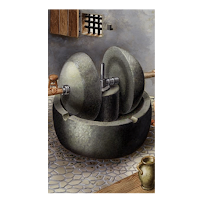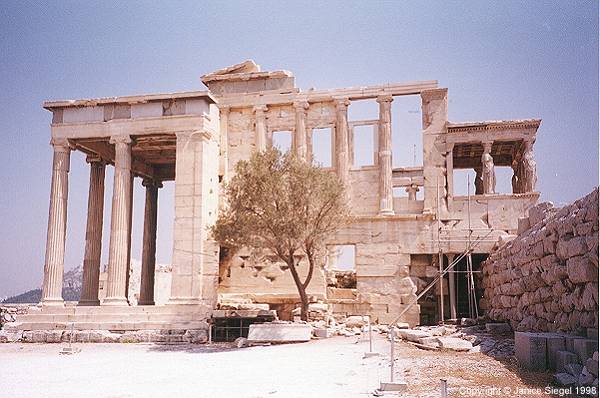At the olive oil emporium there were some infused olive oils with very strange twists like Habanero and Blood Orange. There was also a collection of olive oils from all around the world. They also had a body wash made from 100% olive oil. It seems to be inspired by what athletes did in antiquity by rubbing oil on their bodies and scrapping it off with a strygil. These types of stores show how olives and olive oil have become more than something to cook with. It has evolved to be a household item, while at the same time being a luxury. This is parallel to antiquity because of the different grades of oil and how often people could use it.
Olive the Above
Sunday, December 1, 2013
The Commercialization of Olives
I visited a couple of other stores besides the grocery stores. One was called Sur La Table. It is a kitchen needs store. The other was Olive Emporium Sarasota. At Sur La Table there was a large selection of olive oil, but what really struck me was the amount of products with olives on them. There were some tools for olives as well. There was an olive pitter and a "boat" to hold olives.
Items at Sur La Table with olives on them included a large vase, a tapestry, multiple platters, a spoon rest, a cook book, and napkins. This shows the symbolism that olives hold as an image for food.
Grocery Stores
Today it is much easier to buy olives and olive oil. You can buy them at just about every grocery store. In antiquity it was likely that if you were middle class you were a farmer so you probably would be growing some portion of olives. If you didn't grow olives you would have to buy oil from a farmer. I went out to multiple grocery stores to look at what olive type products they offered. Every grocery store has olives and olive oil. Some nice stores even have all types of stuffed olives and some flavored olive oil. I visited four grocery stores to look at the selection. In order of least nice to nicest: Publix, Trader Joe's, Whole Foods, and Morton's Gourmet Market. Each had some selection of olives and olive oil but some were extremely extensive.
At Publix there was a lot of olive oil and a few pasta salads and olive dishes for purchase.
The pictures above are from Morton's Market in Sarasota, FL. They had an extensive collection of olive oils, as well as the olive bar and the stuffed olives above
At Whole Foods they also had a massive olive bar with every kind of olive you could want. They had the largest selection of olive oil too.At Publix there was a lot of olive oil and a few pasta salads and olive dishes for purchase.
Trader Joe's didn't have any olive dishes or an olive bar, but in addition to a large selection of olive oil they had a few flavored oils as well.
Harvest and Production
We have learned a lot about the harvest of olives and the production of olive oil through written records, archaeology, and art. Many of these practices are largely unchanged. We do know that wild olives were not harvested for the most part; however, they were used for making perfume and to crown the olympic victors.
What the olive will be made into depends on how ripe it is. This still holds true today. Before the olives are ripe some are harvested to produce the highest quality oil named Omphakinon. After another month more olives are harvest that will be made into regular oil. Once the rest of the olives were fully ripe they were harvested.
Harvesting was done by one of three ways:
Source:
Perdicoulias, Panaghiotes. Museum of the Olive and Greek Olive Oil: A Guide. Athens: Piraeus Bank Group Cultural Foundation, 2007. Print.
Source: Source:
These images show the harvesting process and a drawing of a Trapetrum.
What the olive will be made into depends on how ripe it is. This still holds true today. Before the olives are ripe some are harvested to produce the highest quality oil named Omphakinon. After another month more olives are harvest that will be made into regular oil. Once the rest of the olives were fully ripe they were harvested.
Harvesting was done by one of three ways:
- Hitting the branches with something
- Picking the ripe olives up off the ground
- Plucking the olives by hand
Source:
Perdicoulias, Panaghiotes. Museum of the Olive and Greek Olive Oil: A Guide. Athens: Piraeus Bank Group Cultural Foundation, 2007. Print.
Source: Source:
These images show the harvesting process and a drawing of a Trapetrum.
Uses: Today


Olives and olive oil today have become something that are very easy to take for granted. If you go to any grocery store you will see that olive oil makes up a majority of all of the kinds of oil. A selection of olives has developed to encompass a wide range of possibilities. You can find everything from gourmet olives in glass jars stuffed with things from all over the world to olives packed in a tin can.


These pictures are from one of the grocery stores near my house.
Uses: In Antiquity
While one may think that olives were probably used for the same purposes in antiquity, there were some uses in the ancient world that people would find unconventional today. Some uses were as medicine, lamps, prizes in sporting competitions, and a way for athletes to cleanse the body. Black olives were for eating and green olives were reserved for making oil. Victors of various competitions like the Panathenaic games would receive and amphora of olive oil. These large pots were beautifully decorated.
To cleanse the body athletes would rub olive oil on their skin they would then use a tool called a strygil to scrape it off. This was thought to help recovery.
This is similar to a process done today with a different kind of oil. It is colloquially known as scraping and it helps athletes recover from minor injuries. A small plastic wedge is used as the strygil.
To cleanse the body athletes would rub olive oil on their skin they would then use a tool called a strygil to scrape it off. This was thought to help recovery.
This is similar to a process done today with a different kind of oil. It is colloquially known as scraping and it helps athletes recover from minor injuries. A small plastic wedge is used as the strygil.
Symbolism: Today
In today's world the olive still has a lot of symbolism. Three of the most prevalent things represented by an olive branch today are: Peace, the United Nations, and the Olympic Games.
The image of a dove and a olive branch is often a symbol used for peace. The term extending the olive branch is also often used to express trying to deal with things in a peaceful manor.
The image of a dove and a olive branch is often a symbol used for peace. The term extending the olive branch is also often used to express trying to deal with things in a peaceful manor.
The United Nations also uses the olive branch in their logo. This ties into the idea of the United Nations have the goal of bringing the world together in a peaceful way.
Another very prevalent image of the olive branch comes from the modern Olympic Games. This imagery comes from the ties to the ancient Olympic Games, where the olive branch was a symbol for the games. The victors received an olive branch wreath among other prizes as well. In 2004 the Olympic Games returned to their birthplace of Greece. The victors were given Olympic wreaths as a way to remember the ancient games and help demonstrate the idea of unification and peace.
Symbolism: In Antiquity
Athena was not always the Goddess of Athens. She competed with Poseidon for the position. Both Gods offered the people of Athens gifts. Poseidon gave them a salt spring. Athena gave them the olive. The Athenians chose Athena. This is said to be the reason there is always an olive tree at the Acropolis.
After the founders of Rome, Romulus and Remus were left for dead by their parents they were said to have been found under an olive tree by a wolf.
Subscribe to:
Posts (Atom)


















